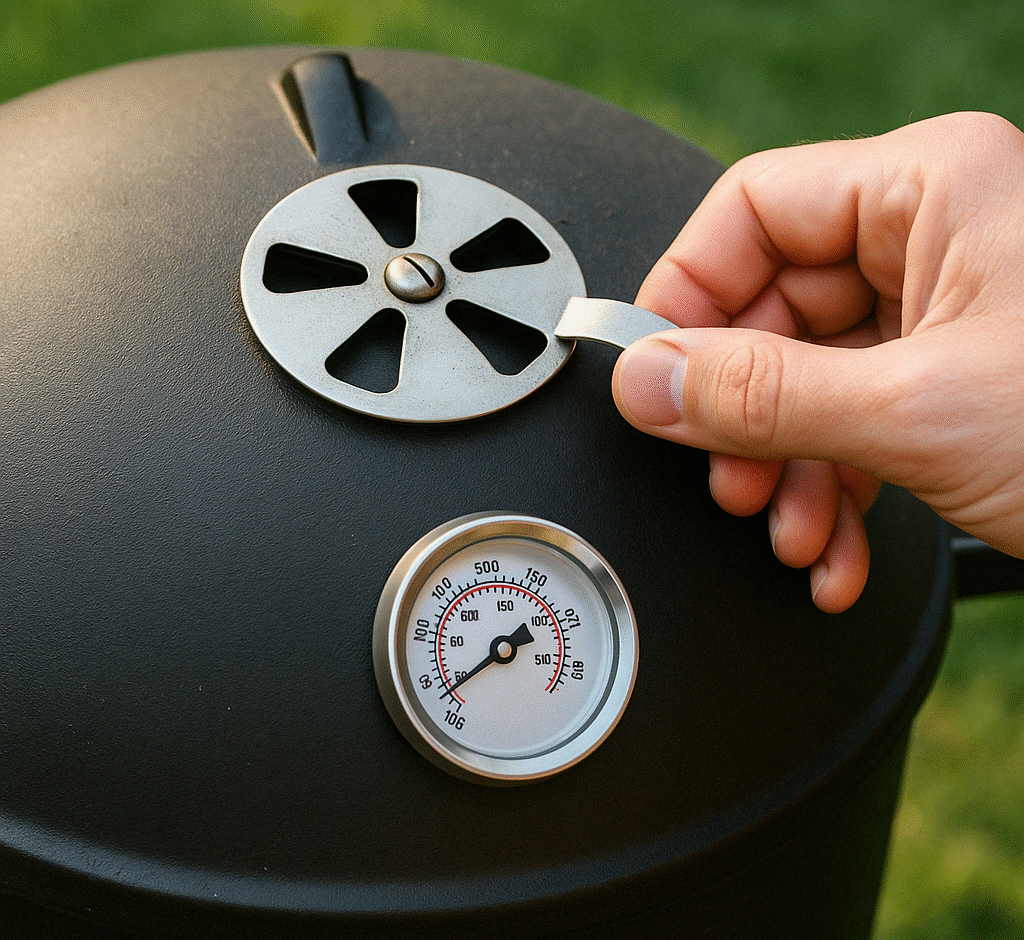How to Control Temperature and Smoke Flow Like a Pro
- 16 April 2025
- 0
- 3 Min Read

Struggling to manage heat or smoke in your BBQ? Learn expert tips for dialing in the perfect smoking temperature and airflow every time.
The Holy Grail of Smoking: Temperature + Smoke Control
you’re using a stick burner, a pellet grill, or an electric smoker, getting these two factors right is what separates backyard dabblers from pitmasters.
It’s not just about setting a temperature—it’s about maintaining it, controlling the smoke quality, and creating an environment where meat can slowly transform into something tender, flavorful, and unforgettable.
Understanding the Heat Zones
There are two zones in most smokers:
- Fire Zone: Where the heat is generated (firebox or heat element)
- Cook Zone: Where the meat actually smokes
The key is getting that cook zone to stay between 225°F and 275°F for most meats. That’s the sweet spot for breakdowns in fat and connective tissue while keeping things juicy.
How to Control Temperature Like a Boss
1. Know Your Fuel
- Charcoal: Lights hot and fast, but temperature drops as it burns. Add unlit coals gradually to maintain heat.
- Wood Logs: Great for traditional smokers. Let logs burn down to embers before cooking for more stable heat.
- Pellets: Handled by the auger in a pellet grill—just make sure the hopper stays full.
- Electric: Controlled by a thermostat, but make sure it’s well-insulated and dry.
2. Use a Thermometer (Not the Built-In One)
Those built-in dome thermometers are often way off. Invest in a digital dual-probe thermometer to track both cooking chamber and internal meat temps.
3. Control Your Airflow
More oxygen = hotter fire. Less oxygen = cooler temps.
- Intake vent (bottom): Controls how much oxygen feeds the fire.
- Exhaust vent (top): Controls how much smoke and heat exit the chamber.
Rule of thumb: Keep your exhaust vent fully open. Use the intake vent to control temps.
Smoke Quality: Clean vs. Dirty
You don’t want your meat swimming in thick, white smoke—that’s dirty smoke, and it can leave your food tasting bitter or even acrid.
You want thin, blue smoke. It’s clean, subtle, and flavorful.
Tips for Clean Smoke:
- Don’t overload with wood.
- Burn wood down to coals before smoking.
- Use dry, seasoned wood.
- Maintain steady airflow.
Wind, Rain, and Weather Woes
Mother Nature will test your BBQ patience. Here’s how to fight back:
- Wind: Block it with a windscreen or smoke in a sheltered area.
- Cold: Preheat longer and insulate your smoker with a welding blanket or fireproof wrap.
- Rain: Keep your smoker covered or under a canopy. Moisture = temp drops.
The Power of a Water Pan
A water pan helps regulate temperature and keeps the cooking chamber humid, which prevents your meat from drying out. It’s especially useful in charcoal or offset smokers.
Just remember to check the water level every couple of hours on long smokes.
Final Thoughts
Mastering temp and smoke control is all about understanding how your smoker breathes and burns. Pay attention to your fire, monitor your temps, and adjust airflow slowly. Like any skill, it comes with practice—but once you nail it, your BBQ will be next-level.
